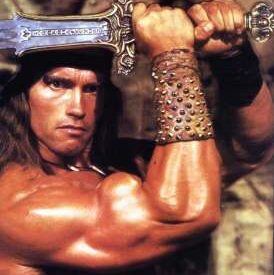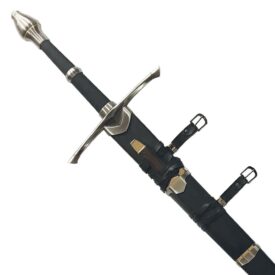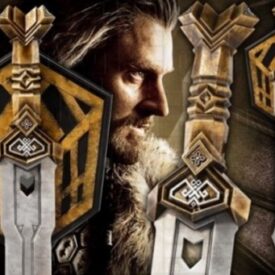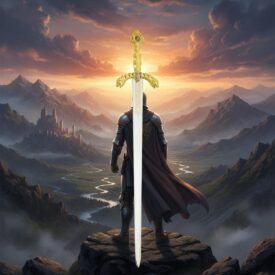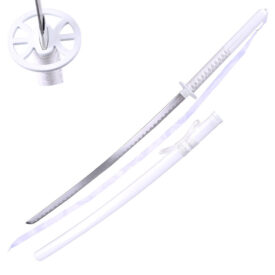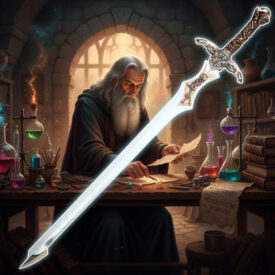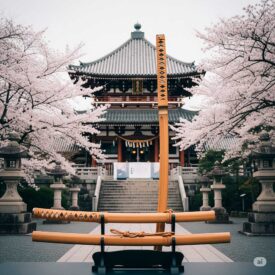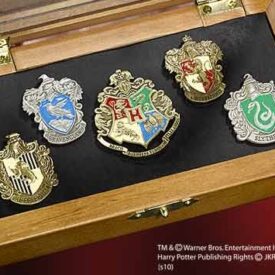Legend has it that an ancestral flame and a forgotten breathing technique forever changed the destiny of a young man who crossed mountains and shadows to save his sister. That modern legend exists: Kimetsu no Yaiba, known as Demon Slayer, is not only a story of honor and redemption but also an inexhaustible source of objects that allow fans to get up close to that universe. In this article, you will discover the most relevant products, how they relate to the story, what to look for as a collector, and how to interpret the quality and historical-fictional fidelity of each piece.

Why Kimetsu no Yaiba Products Matter More Than a Simple T-shirt
Franchise merchandise is much more than just objects: they are pieces of affective memory, symbols that connect a community. When you hold a Tanjiro figure or run your hand over the hilt of a replica katana, you are holding a story, a breathing technique, and an aesthetic that refer to the Taisho Era reinvented by Koyoharu Gotouge.
This article offers you a clear path to understanding the differences between official items and replicas, evaluating materials, and deciding which pieces deserve a place on your shelf or in your cosplay practice. We also include an essential timeline that places the key releases and moments of the franchise, useful for understanding why certain products become iconic.
Essential Kimetsu no Yaiba Timeline
The history of the franchise and its dissemination milestones help to understand the demand for merchandising and the appearance of special editions.
| Year | Event | Impact on products |
|---|---|---|
| 2016 | Manga publication begins | First wave of illustrations and posters; first collectibles begin |
| 2019 | Anime premiere by Ufotable | Radical increase in demand for figures, clothing, and replica katanas |
| 2020-2021 | Mugen Train movie and box office records | Special editions, figmas, and luxury statues; movie-themed merchandise |
| 2022-2024 | Saga expansion in new seasons and licensed products | Sustained growth of the catalog: clothing, accessories, and home goods |
| 2024-2026 | Periodic releases of exclusive figures and collaborations | Appearance of limited editions and reissues for collectors |
Featured Products
The variety is immense and adapts to different types of fans: from those looking for an everyday garment to the collector who invests in high-quality pieces. Below, we break down the key categories and what aspects you should value in each.
T-shirts and everyday clothing
T-shirts are the most direct way to express affinity for the work. There are sober designs — with the Demon Slayer Corps emblem or haori patterns — and bolder versions with battle illustrations.
What to value:
- Print quality: look for crisp, wash-resistant screen prints.
- Fabric composition: 100% cotton or blends with a high percentage of cotton for comfort and durability.
- Faithful design: details such as Tanjiro’s haori geometric patterns or Nezuko’s motifs make an aesthetic difference.

Collectible figures and statuettes
Figures are the heart of collecting. They range from static resin statues to articulated figures that allow recreating scenes. Quality varies greatly: mass edition, export grade, or high-end pieces made by specialized manufacturers.
How to distinguish a good figure:
- Modeling details: you’ll see the difference in facial features, clothing folds, and textures.
- Paint and finishes: shadows, gradients, and varnishes mark fidelity to the character.
- Material and weight: resin pieces have presence and stability; PVC is usually lighter and more accessible.
Examples of use and display
A Tanjiro figure next to a water effects stele recreates the Water Breathing in miniature. Combining figures of different sizes requires visual coordination; think about heights and backgrounds to tell a coherent scene.
Swords, katanas, and weapon replicas

Katana replicas are one of the most emblematic items. They range from decorative katanas to functional replicas (sharp or unsharpened) designed for collections or stylized martial arts practices. For many fans, the katana is a bridge between fiction and the traditional craftsmanship of the Japanese weapon.
Aspects to consider:
- Manufacturing technology: stainless steel, alloys, and painted finishes. Higher quality replicas use fabric-wrapped tsuka and worked saya.
- Edge and safety: determine if the piece is purely decorative or suitable for cutting (in which case it requires additional care and legal responsibility).
- Thematic details: ashimotos, tsuba, and haori patterns are often reproduced to maintain the character’s aesthetic.
Bedding and home goods
Transforming a bedroom into a themed space is an intense way to celebrate the series. Duvets, cushions, and curtains with Demon Slayer motifs allow creating atmospheres inspired by key scenes from the anime.
Materials and feel are crucial: soft fabrics, high-definition prints, and wear resistance will ensure your investment looks good over time.
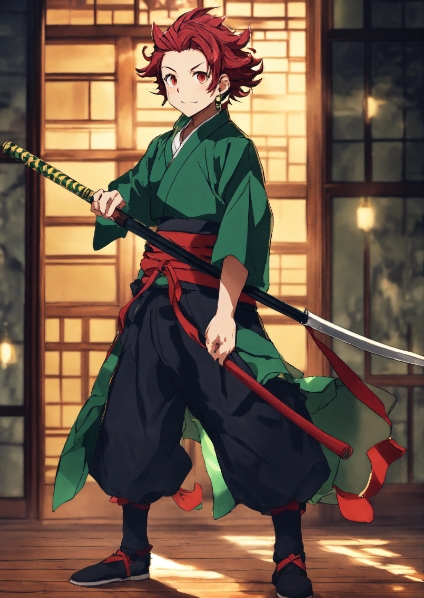
Cosplay items and accessories
Cosplay demands both visual fidelity and comfort. Uniforms, haori, kimonos, and accessories like Nezuko’s box or the demon slayers’ masks are elements that elevate your interpretation.
Technical tips for selecting cosplay pieces:
- Pattern and cut: the haori must respect the character’s drape for credible movement.
- Lightweight accessories: if you participate in events, prioritize materials that withstand hours of use without fatigue.
- Finishes: embroideries, prints, and raised details increase the sense of authenticity.
How to evaluate authenticity and licensing
The distinction between an official product and a replica is not only legal: it impacts quality, fidelity to the original design, and support for the creator. These are signs that will help you identify licensed pieces:
- License labels and holograms: usually contain information about the authorized distributor.
- Packaging quality: boxes with original art and interior protection indicate a formal release.
- Technical specifications: official products include details about materials and manufacturer.
Controlled replica vs. fan-made creation
Fan creations offer originality and often accessible prices, but quality and fidelity vary. Controlled replicas, on the other hand, respect patterns and materials according to industrial standardization. As a collector, documenting the provenance of the piece increases its value and traceability.
Comparative table: product types and attributes
| Product type | Typical material | Level of detail | Recommended for |
|---|---|---|---|
| Collectible figures | PVC, ABS, resin | High (limited editions) to medium | Collectors and dioramas |
| Katanas/Replicas | Steel, alloys, wood for the saya | High in exterior details | Cosplay and display |
| Clothing and accessories | Cotton, polyester | Medium | Daily use and events |
| Home goods | Microfiber, polyester | Medium | Themed decoration |
Maintenance and conservation of your pieces
The longevity of a collection depends on simple but constant care. Here are practices that preserve color, structure, and value:
- Figures: avoid direct sunlight, clean with soft brushes, and keep in display cases to reduce dust and temperature changes.
- Clothing and textiles: wash according to labels, use mild detergents, and store folded with neutral paper for delicate garments.
- Metal and wood replicas: protect with specific oils for metals if applicable and keep the saya clean and dry.
Preventive conservation
Prevention avoids costly restorations. Document each piece (photographs and technical sheet) and, if placed in display cases, control humidity and temperature to prevent degradation of glues and paints.
How to interpret value and rarity
Not everything expensive is valuable, and not everything rare has a future as an investment. Consider these criteria:
- Print run and edition: numbered pieces or limited editions are usually more valued.
- Condition and packaging: preserving the box and certificates increases resale value.
- Character popularity: iconic characters like Tanjiro, Nezuko, or the Hashira generate constant demand.
Secondary market
In the secondary market, authenticity and condition dictate prices. If you collect with investment in mind, register each acquisition and its provenance; traceability is the best guarantee against counterfeits.
Relationship between narrative and product design
One of the charms of Kimetsu no Yaiba is how each character’s aesthetic translates into an object. Tanjiro’s haori, with its green and black pattern, becomes prints, kimonos, and covers; Nezuko’s box inspires unique transport boxes and backpacks. Water Breathing is captured in dioramas with aquatic effects, while the Flame style is translated into reddish finishes and rough textures.
Historical-fictional fidelity
Although products combine real elements (katanas, tsuka, saya) with artistic licenses, many manufacturers resort to traditional techniques to increase aesthetic authenticity: tsuka wrapping, saya lacquering, or simulated forging in finishes. This blend of craftsmanship and contemporary design is part of the appeal.
Final recommendations for the enthusiast
Whether you are a growing fan or an experienced collector, prioritize consistency in your collection. Select pieces that speak to each other: a central figure, a thematic katana, and a textile that compose a visual narrative.
Take care of documentation and preservation. A well-maintained piece with its original box not only creates aesthetic pride but also preserves its value. And above all, allow each object to be a bridge to the stories you love.
The saga of Tanjiro and Nezuko lives on in every product, and each carefully chosen piece extends the magic of that breath that defies darkness.
VIEW ALL DEMON SLAYER SWORDS AND KATANAS | VIEW KIMETSU NO YAIBA THEME SHOP
